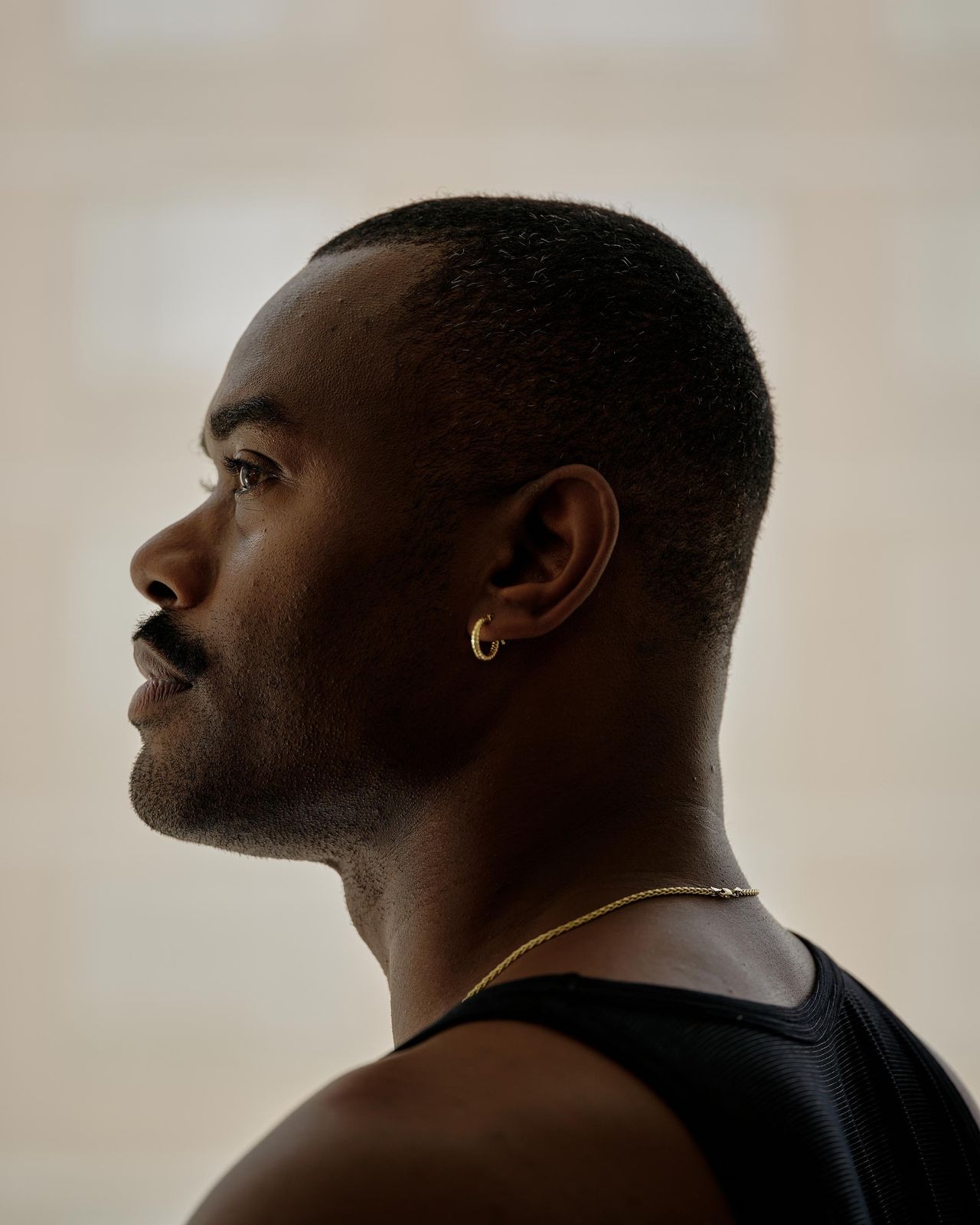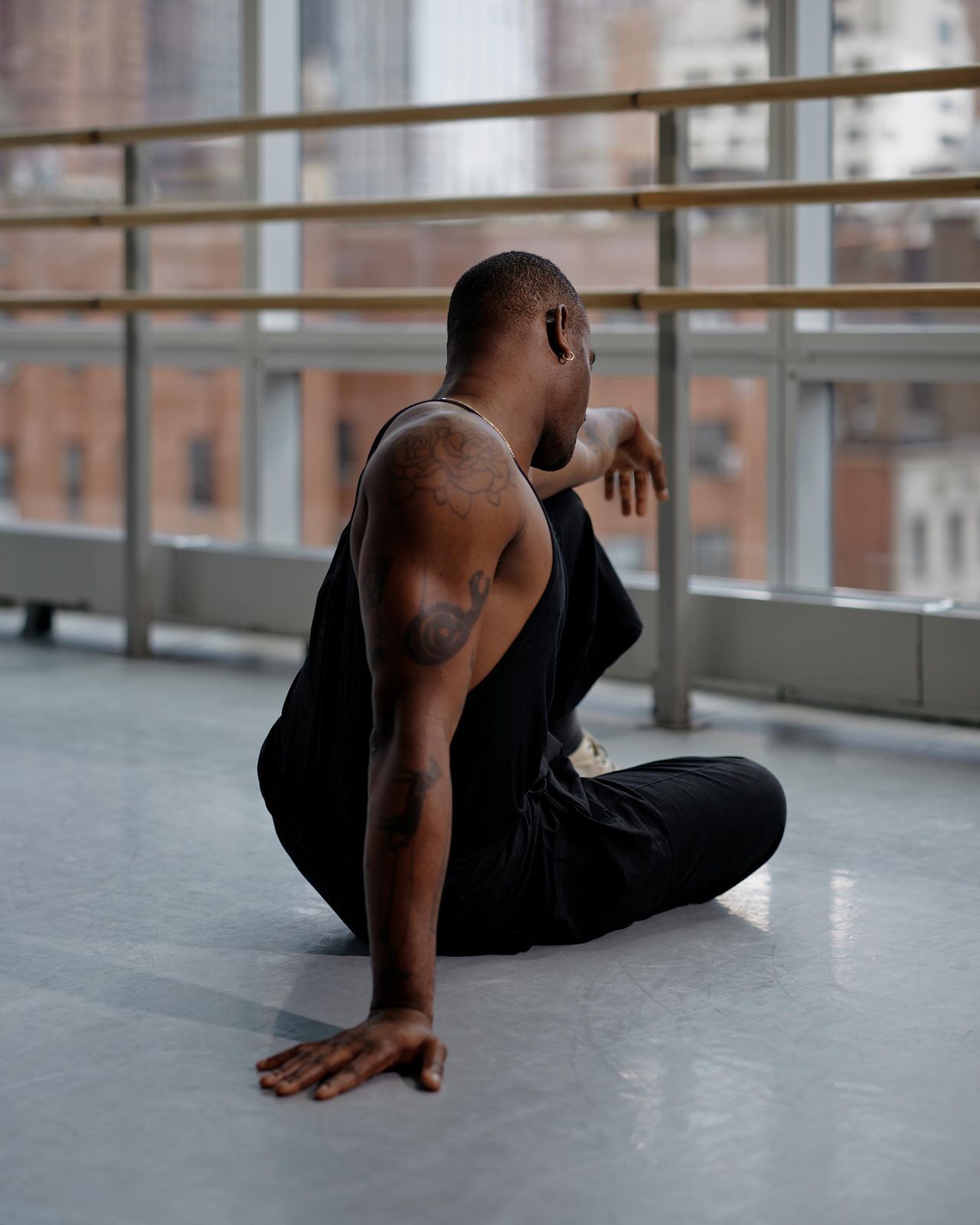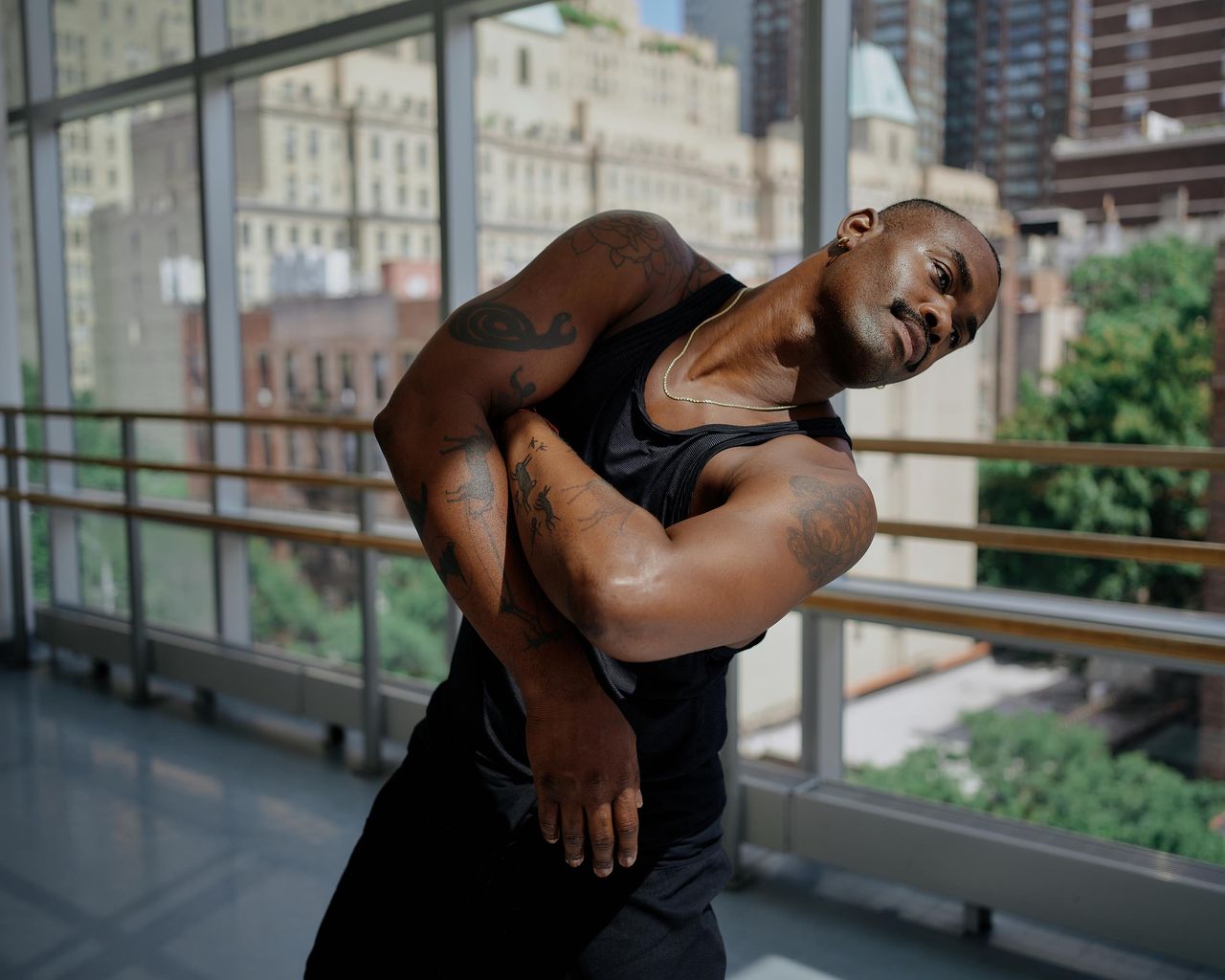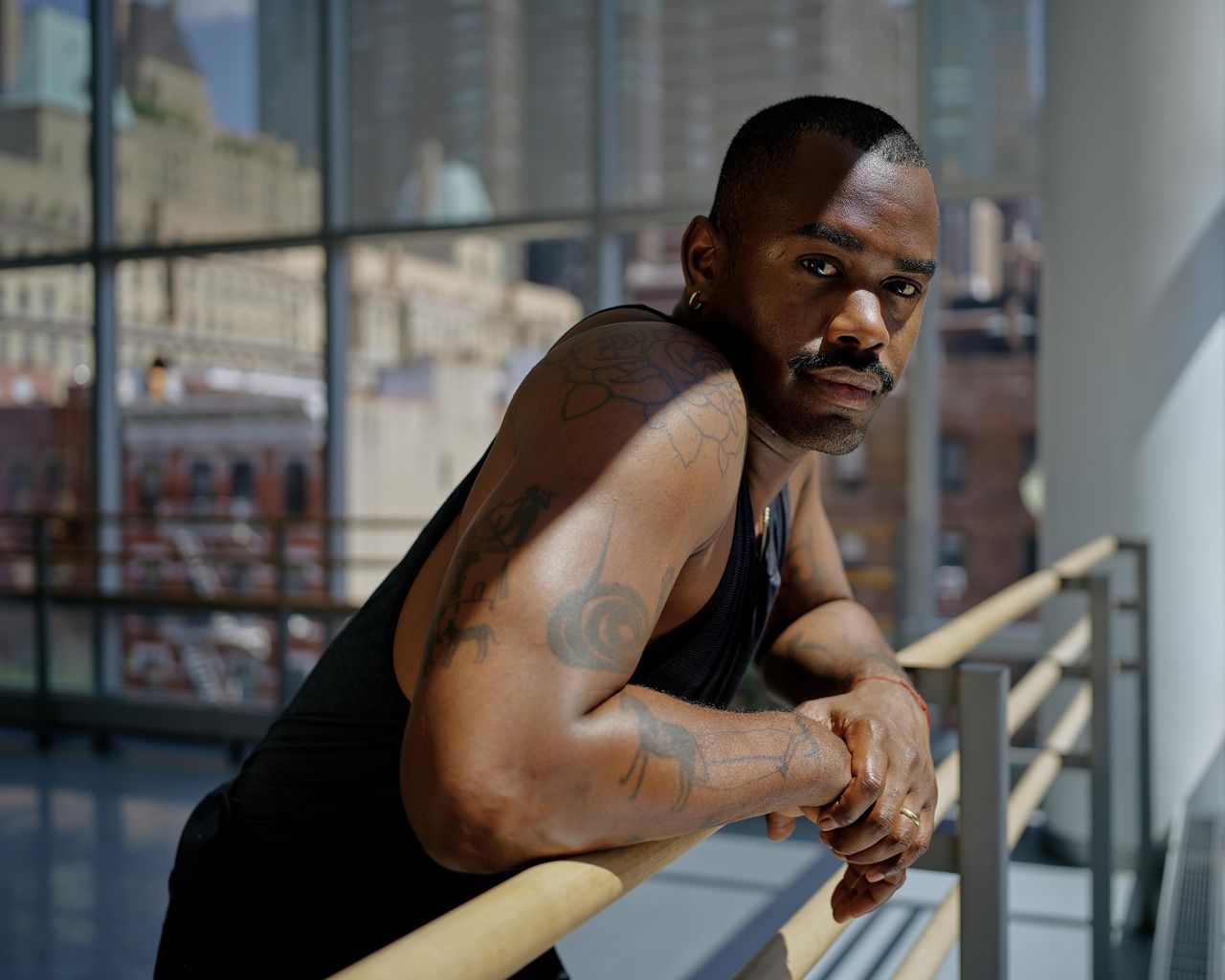For dancer and choreographer Jamar Roberts, work means more than simply creating movement. It’s about recalling pivotal moments throughout history, his childhood and current events, and bringing them back to life. Roberts’ passion for Black storytelling is translated through the depth of research he does for each project, amplifying messages of love and tragedy for his audiences. When Roberts dives into often forgotten eras, music and topics, he hopes to learn as much about them as possible to tell each story through dance, with grace and authenticity.
Roberts first got his start as a dancer for the Alvin Ailey American Dance Theater in 2002, where he worked his way up to serving as resident choreographer of the company from 2019-2022. During his time at the company, he created five bodies of work ― his final one, “In A Sentimental Mood,” debuted last year. The piece fused Duke Ellington’s music with experimental and alternative sounds from Rafiq Bhatia of Son Lux, to help dancers tell a story of Black love.

“The story was inspired by a duet in Alvin Ailey’s ”Blues Suite.” There’s this sort of tumultuous situation that’s happening within that, so I wanted to do a more contemporary take on that in terms of theme, and also movement and vocabulary,” Roberts says, about the project. “They’re in a lovers’ quarrel — and by the end of the piece, she jumps into his arms and they swing off into the wings. So they kind of kiss and make up in the end.”
Roberts’ work lends itself to conversations about the fixation on Black pain and strife in American film and music — particularly projects that are not helmed by Black artists themselves. Often, art depicting the Black experience fixates on physical and sexual trauma — or it simplifies our culture, devoid of nuance and the complexity of the relationships we cultivate.
That’s not to say that period piece films about American slavery or stories about Black grief aren’t important. In fact, Roberts has many works that center grief or tragedy.
But pieces such as “In A Sentimental Mood,” which shows that Black love can play out onstage without suffering at the center of the story, is not only beautiful but necessary. The project is just one of many examples of the intention Roberts places into his work. And it’s proof that Black artists need to be given the space to create work about both joy and despair, and everything else in between.

Roberts describes all romantic relationships ― not just Black love — as complicated, and that informs how he shapes a production. “What helped me do that were all the other elements of theater outside of my choreography — the scenic elements, the costuming,” he says. “They’re dancing on a red carpet, which is symbolic of love, passion and desire. There’s even one moment where the entire piece is flooded with red light. So there is a moment towards the end of the piece where they both kind of see eye-to-eye and come to terms with one another.”
Ultimately, Roberts wants to transport consumers of his work to another place in time, putting them in the headspace to empathize with what’s happening on stage. The Black experience, he reminds me, is multidimensional, and so his work has to be. Another recent project for Alvin Ailey called “Holding Space,” told the story of “radical humility” amid civil unrest and demonstrates the vastness of being Black.
Writers are muses for Roberts, who cites Toni Morrison when he thinks of some of the most powerful influences on his interpretations of love. Her novel, “Paradise,” stands out to him specifically because of its portrayal of female characters; they remind him of the women in his own family. Roberts tells me that he has sometimes drawn from his own family dynamics to help flesh out his stories.

Roberts is part of the Ailey legacy that has always centered Black love in all its iterations. One of the company’s most famous pieces, “Revelations” by Alvin Ailey, utilizes African spirituals and gospel songs to explore both grief and holy joy. Roberts says this story took him back to memories of going to church with his grandmother.
“I grew up going to church with my grandmother all the time, so that entire ballet is so familiar to me, from the hymns that you hear in the music to the costumes that the women wear,” Roberts says. “What was impressive was the way that Alvin was able to capture the essence of church, community, and really the Black experience within that one singular piece. I think that’s a really tough thing to do with dance.”

Roberts is currently working with several ballet companies, blending his background of contemporary and modern style with more methodic movement. It’s both challenging and rewarding, he tells me. And as always, Roberts is observing what’s happening in the real world as he begins to imagine his future projects.
“I always lead with love in a lot of my work, even if it’s not the theme of the actual work — just my love for the dancers who are performing,” he says. “I always try to layer the work so that there’s something really beautiful in it that they can connect to.”
